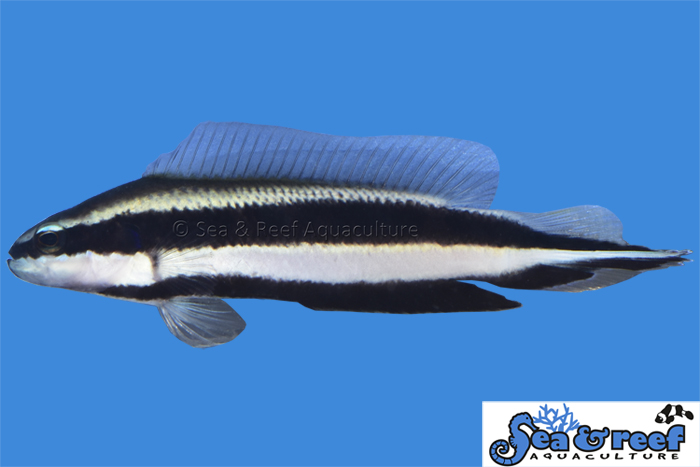
The Striped Dottyback (Pseudochromis sankeyi) is often called the Sankey’s Dottyback. This beautiful little fish has white and black stripes running down the length of its body. The fins are translucent and the tail fin almost tapers to a point. It is one of the more peaceful species in the Pseudochromis family and is reef safe. A 30 gallon or larger aquarium with plenty of hiding places is ideal for this species.
The Striped Dottyback is native to the Southern Red Sea and western Indian Ocean and limited collection from these areas makes it increasingly difficult to come by wild collected fish. In the wild they are often found on shallow reefs and prefer to live in reef structure and under plating corals. Fortunately, this species was added to the Sea&Reef breeding program and captive bred Striped Dottybacks are now readily available in the aquarium trade.
Many Dottyback species have a reputation for being feisty little bullies in the aquarium, but the Striped Dottyback is one of the smaller and less aggressive species. In the wild they reach a maximum size of 7 centimeters (2.75″). The species is easy to care for and they are considered one of the more hardy species. Upon introduction, expect the Striped Dottyback to be shy at first but once settled, they quickly become bolder and spend more time in the open. It is possible to establish a pair by selecting a large and a small fish. Dottybacks are protogynous hermaphrodites meaning they are all born female and can change sex to males. Unlike clownfish, the larger fish will typically change into a male and a pair is formed. Once eggs are laid it is up to the male to guard the eggs from would be predators.
Most dottybacks love meaty food items like Mysis shrimp, brine shrimp, krill, and various frozen meaty aquarium foods. They not very finicky feeders so pellet and flake foods will also be a good food option. Another benefit of having Orchid dottybacks is their willingness to eat bristle worms! It is not uncommon to see white bristle worm spines protrude from their faces. This does not seem to bother them and soon the hair-like bristles (chaetae) will soon disappear.





